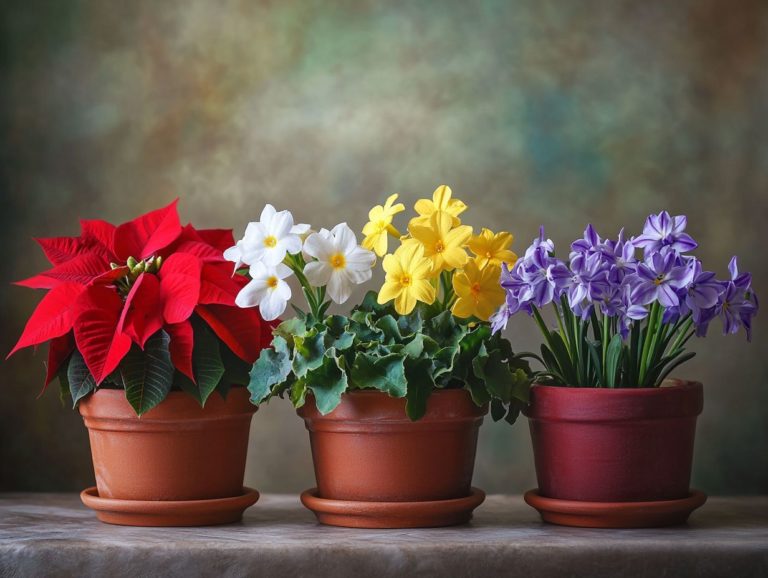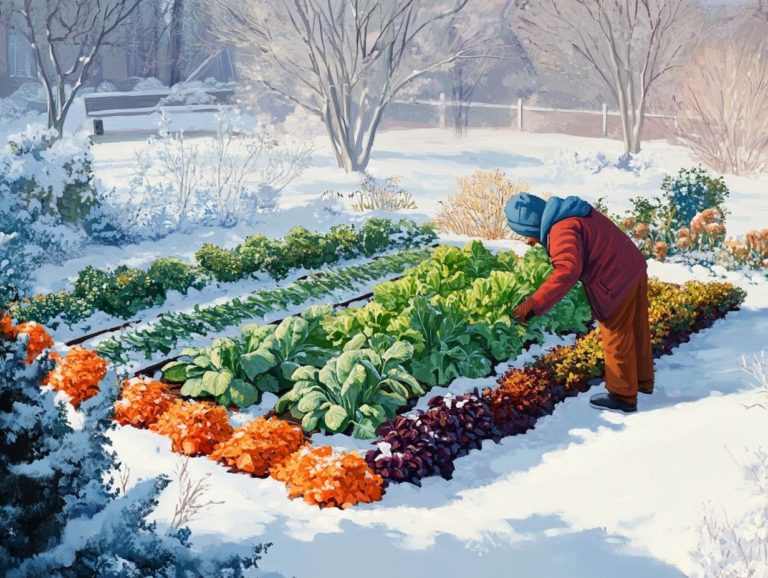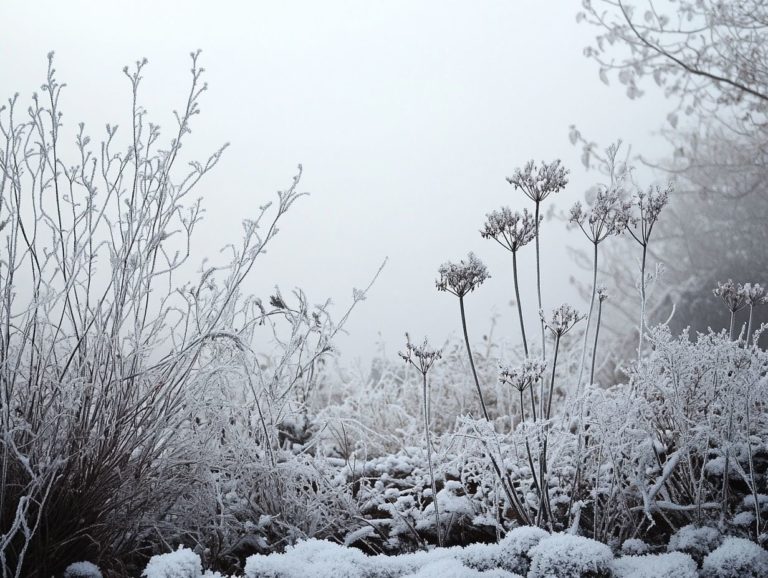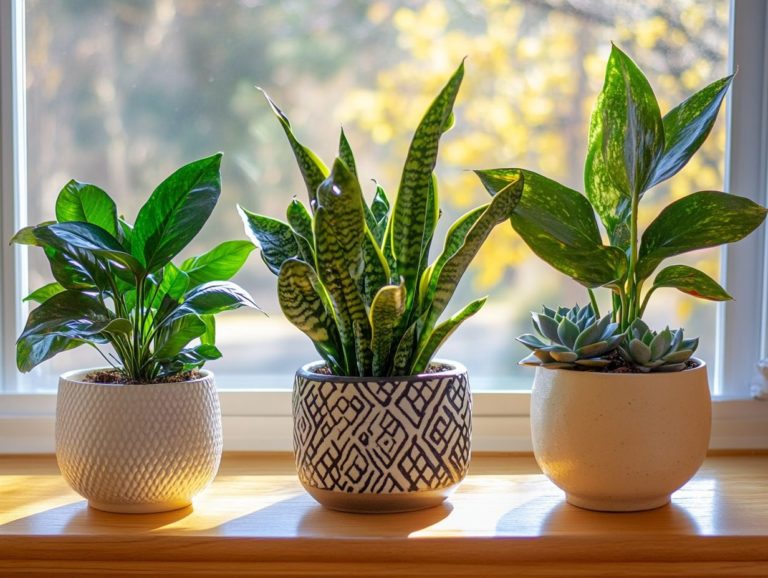Creating a Cold-Climate Gardening Club
Cold-climate gardening brings unique challenges and rewards. Establishing a gardening club is an excellent way to navigate these.
This article explores the intricacies of cold-climate gardening and highlights the benefits of collaborating with fellow enthusiasts. Fostering community connections and sharing valuable insights can elevate your gardening experience.
You ll find guidance on creating an engaging club, planning exciting activities, and maintaining strong membership. This ensures your gardening journey flourishes, even in chilly conditions.
Get ready to cultivate not just your garden, but a thriving community around it!
Contents
- Key Takeaways:
- Benefits of Joining a Gardening Club
- Steps to Creating a Cold-Climate Gardening Club
- Activities and Events for the Club
- Maintaining the Club and Membership
- Frequently Asked Questions
- What is a cold-climate gardening club?
- Why should I join a cold-climate gardening club?
- How do I start a cold-climate gardening club?
- What types of activities do cold-climate gardening clubs do?
- What are the benefits of joining a cold-climate gardening club?
- Do I need to be an experienced gardener to join a cold-climate gardening club?
Key Takeaways:
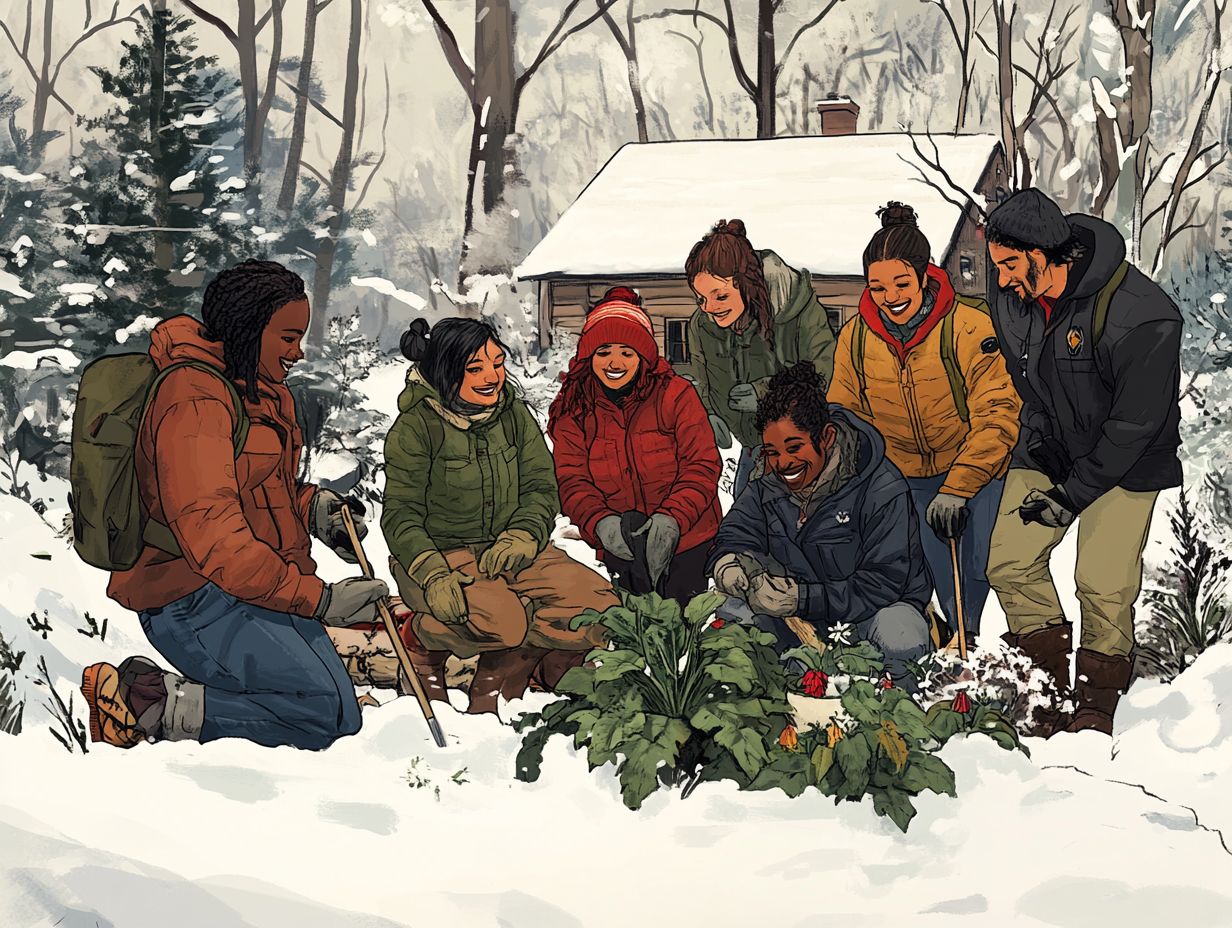
- Joining a gardening club in a cold climate offers community and opportunities to learn from fellow gardeners.
- Creating a cold-climate gardening club involves identifying potential members, setting goals, and establishing meeting times. This ensures a successful and organized group.
- Activities like garden tours, workshops, and seed swaps can bring members together and enhance their gardening experience.
What is Cold-Climate Gardening?
Cold-climate gardening, especially in places like Boise, Idaho, and Eagle County, requires fine-tuning your strategies to thrive despite harsh winter temperatures and short growing seasons. This method emphasizes using hardy plants that can withstand the elements, creating a sanctuary that thrives even in adversity.
By understanding the unique challenges of cold climates, you can cultivate a garden that features organic vegetables, fragrant herbs, and vibrant blooms, all set against snow-covered landscapes.
To increase your chances of success, consider using raised beds. These elevated plots improve drainage and warmth, effectively extending your growing season. Floating row covers are another excellent tool; they protect tender plants from frost while allowing sunlight and moisture to reach them.
Choosing the right annuals and biennials is crucial. Selecting varieties known for their cold tolerance will help keep your garden lively, even when temperatures dip.
Smart strategies for seed germination, such as starting seeds indoors or using heat mats, can enhance your germination rates. Engaging with community gardening groups allows you to exchange resources, tips, and experiences, fostering a collaborative spirit that promotes sustainable practices.
Benefits of Joining a Gardening Club
Joining a gardening club opens the door to a wealth of benefits that nurture community support, shared expertise, and improved gardening skills. This ultimately elevates both your personal and collective gardening pursuits.
You ll connect with kindred spirits, exchange invaluable gardening tips, and gain insights into best practices for nurturing organic vegetables and resilient flowers, especially in colder climates.
Joining a gardening community enhances your motivation and gives you access to a treasure trove of resources, workshops, and events that truly enrich your gardening journey.
Join a gardening club today and transform your gardening experience!
Community and Learning Opportunities
Community and learning opportunities within gardening clubs foster an enriching environment where you can share insights on best practices and innovative gardening techniques. These gatherings frequently feature workshops that delve into a variety of topics, from planting techniques to seasonal care for resilient plants, ensuring you, whether a novice gardener or an experienced horticulturist, gain valuable knowledge tailored to your local climate.
By participating in community events and garden tours, you can experience firsthand the beauty and diversity of local plants and innovative gardening designs.
Many clubs also organize seed swaps, allowing you to exchange heirloom varieties and promote biodiversity. Such events cultivate camaraderie and inspire new gardening projects among members. Learning from each other is particularly influential, as seasoned gardeners share their successes and challenges, offering invaluable insights that can lead to fruitful harvests.
Notable organizations like the American Horticultural Society and local garden clubs often support these initiatives, strengthening community ties and encouraging sustainable practices. This nurturing ultimately helps cultivate a shared passion for growing and preserving nature.
Steps to Creating a Cold-Climate Gardening Club
Starting a cold-climate gardening club can be an exciting adventure! It requires a thoughtful approach that fosters community support and engagement, enriching the gardening experiences of every member. To get started, consider checking out this guide on how to start a cold-climate garden.
Begin by identifying individuals who share your passion for gardening and face similar environmental challenges, like those found in Boise, Idaho, or Eagle County. Once you’ve gathered potential members, refer to resources like the best cold-climate gardening forums to set clear goals and objectives that will serve as a roadmap for the club’s activities.
This will ensure members can take advantage of educational workshops and social events, ultimately benefiting from a collective wealth of knowledge in sustainable gardening and organic farming practices.
Identifying Potential Members
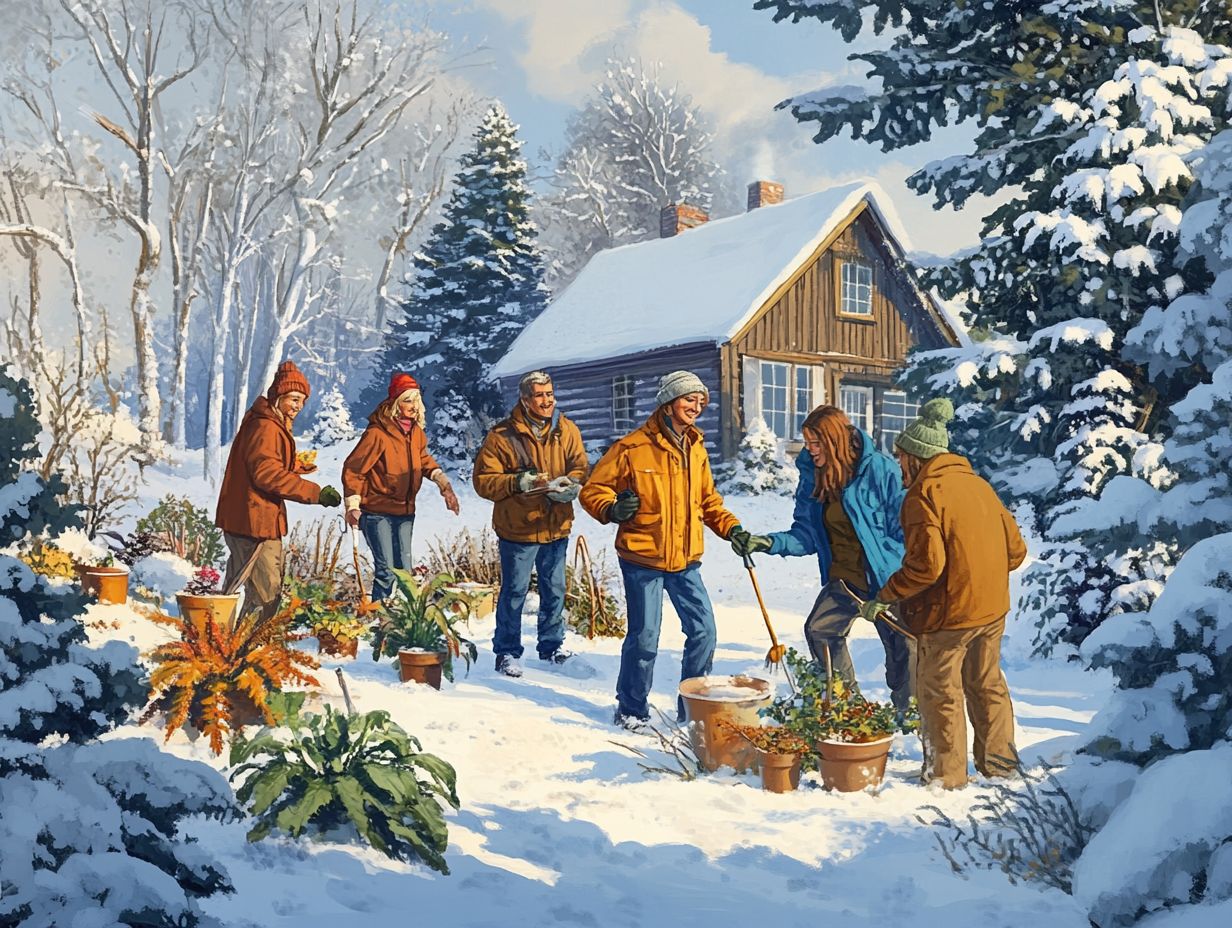
Identifying potential members for your cold-climate gardening club requires thoughtful outreach that resonates with local gardeners and those keen on sustainable gardening practices. Consider promoting your club through social media, local gardening stores, and community events where fellow enthusiasts can gather to exchange insights on growing resilient plants, hardy perennials, and organic vegetables. Additionally, you might find it helpful to share how to make a cold-climate gardening journal to encourage organization and planning among members.
By cultivating a welcoming atmosphere, you can inspire potential members to join and actively engage in the gardening community.
Hosting workshops or demonstration days at neighborhood gardens can effectively draw in local gardeners. For instance, collaborating with schools or community centers to offer gardening classes not only broadens your reach but also nurtures connections among potential members.
Embracing and celebrating diversity within your gardening club is crucial. Highlighting the unique contributions of various cultural backgrounds ensures everyone feels valued and supported. By implementing these inclusive strategies, you can foster a stronger, more resilient community that thrives on shared passion and collective growth.
Setting Goals and Objectives
Setting clear goals and objectives for your gardening club is essential for providing direction and ensuring that you and your fellow members can achieve your aspirations through community support and sustainable gardening practices.
This could involve planning workshops on topics like seed germination, herbaceous plants, or cultivating frost-tolerant varieties, all of which enhance the overall gardening experience.
Clearly defined objectives can also help organize community events, foster engagement, and create a strong sense of belonging among members.
By focusing on specific goals such as enhancing knowledge about local plant varieties, promoting organic farming methods, or orchestrating enjoyable garden tours you can cultivate a more enriching environment.
It s crucial for these objectives to resonate with your interests. This alignment not only boosts participation but also cultivates a deeper appreciation for gardening and local ecosystems, transforming your experience into a collective journey of discovery and growth.
Establishing Meeting Times and Locations
Setting meeting times and locations for your gardening club is key to building community support. You want a schedule that works for everyone, keeping potential gardening conflicts in mind.
Choosing inviting venues, like community centers or local gardens, can boost participation. Survey members to gather input on their preferred times and locations.
Consider accessible parks or even members’ backyards for a relaxed atmosphere. Involving local businesses can create sponsorship opportunities and attract more community members.
Activities and Events for the Club
Activities within a gardening club are vital for improving your gardening skills through hands-on engagement. Events like garden tours let you see local plants and innovative designs up close.
Workshops cover important topics like planting techniques and growing resilient flowers and organic vegetables. Organizing seed swaps strengthens community bonds and encourages unique plant exchanges.
Garden Tours and Workshops
Garden tours and workshops are excellent for learning from seasoned gardeners. They provide hands-on experiences in nurturing plants suited for cold climates.
These sessions emphasize practical applications like seed germination and organic farming methods. You can share your gardening stories, fostering a supportive community.
These gatherings also let you observe successful practices, enriching your gardening toolkit. Workshops cover specialized topics, including soil amendment and pest management relevant to colder regions.
Through these experiences, you enhance your skills and deepen your understanding of your local ecosystem. This encourages sustainable gardening practices that benefit the environment and the entire community.
Seed and Plant Swaps
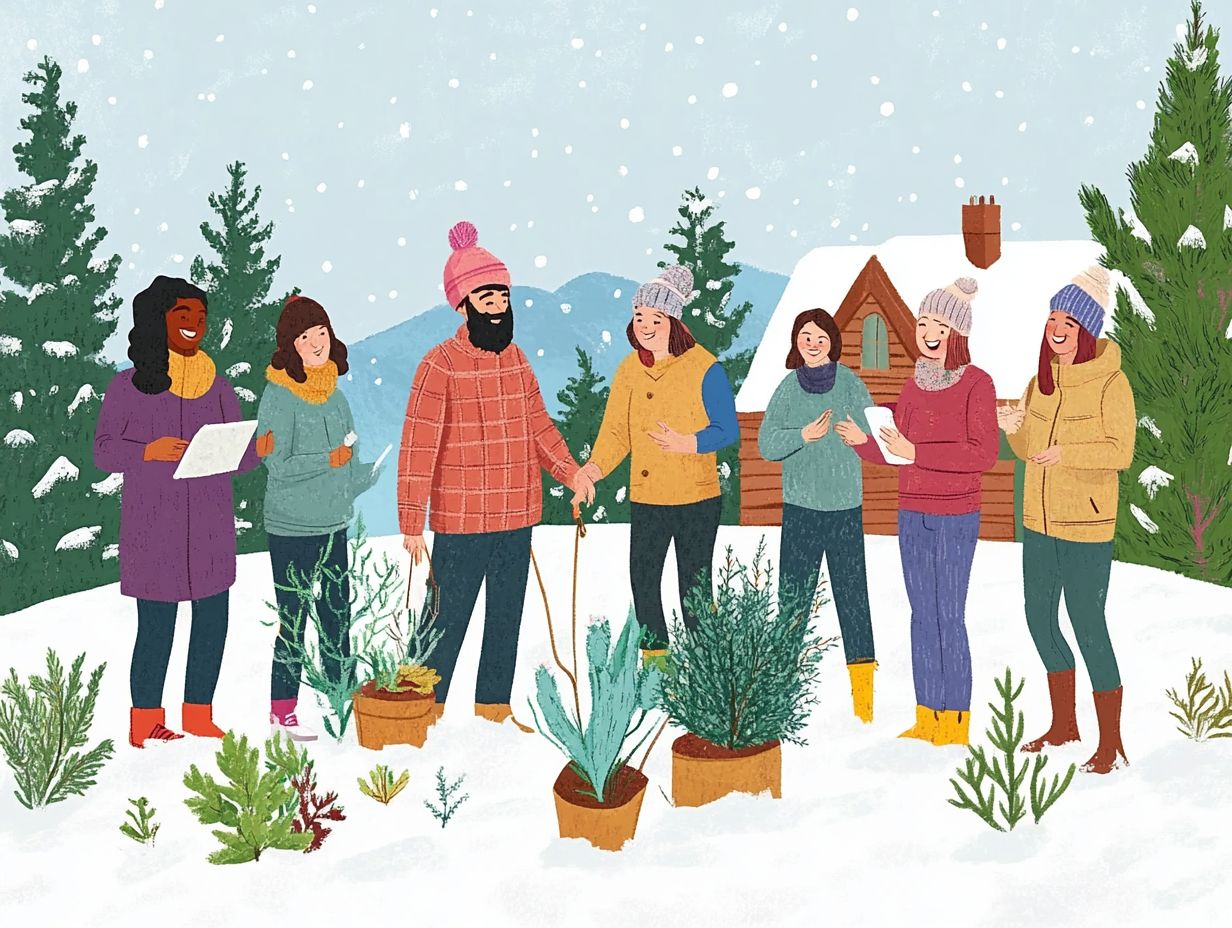
Seed and plant swaps are exciting events that promote community and biodiversity. You can exchange unique varieties of local plants and seeds.
At these gatherings, fellow gardeners bring surplus seeds and seedlings, transforming waste into valuable resources. These exchanges serve as informal workshops to learn best practices for growing and caring for plants.
Sharing knowledge about local varieties enriches your gardening journey and highlights the value of preserving regional ecosystems. These events cultivate a sense of belonging and turn a shared passion for gardening into a vibrant support network.
Maintaining the Club and Membership
To cultivate a thriving gardening club and membership, you must prioritize effective communication and organization. It’s essential to ensure that every member feels valued and engaged within the community.
Regular updates, newsletters, and shared resources will keep everyone informed about upcoming events, workshops, and valuable gardening tips. This reinforces your club’s commitment to supporting cold-climate gardening practices.
By fostering an inclusive atmosphere that celebrates diverse gardening experiences, you can strengthen your membership and encourage ongoing participation.
Communication and Organization
Effective communication and organization are vital for your gardening club’s success, ensuring every member remains engaged and well-informed about activities and events.
Using tools like Slack for real-time discussions and Google Docs for collaborative garden planning can cultivate a sense of community among your members. Regular newsletters can highlight individual members or share successful gardening tips, fostering a more personal connection.
Defining specific roles such as event coordinators or knowledge sharers encourages active participation and ownership within the group. This clarity reduces confusion and enables members to take initiative, nurturing a vibrant and productive gardening community.
Recruiting New Members
Recruiting new members for your gardening club is crucial for sustaining growth and garnering community support. This calls for active efforts to reach out and imaginative engagement strategies.
One effective approach is organizing hands-on workshops or community garden days, where participants can revel in the joys of gardening firsthand. For example, a local club attracted members by hosting a ‘Plant-a-Tree’ event that invited families to beautify the neighborhood.
Create exciting social media campaigns that showcase gardening tips or highlight success stories. By forming partnerships with local schools or nurseries, you can connect with younger audiences, nurturing a lifelong love for gardening.
These innovative strategies not only enhance visibility but also strengthen community ties, ensuring that your membership base remains robust and thriving.
Join us for our next event and become part of our growing community!
Managing Finances and Resources
Managing your finances and resources effectively is essential for the sustainability of your gardening club. It ensures that funds are allocated wisely to support activities, events, and community initiatives.
Establishing a clear budgeting plan will help you manage expenses related to workshops, garden tours, and other club activities while identifying potential funding sources like grants or local sponsorships.
Practicing transparency in your financial dealings fosters trust among members and enhances their engagement in club initiatives.
By meticulously tracking income and expenses, you can make informed decisions about future projects and prioritize initiatives that resonate with your membership. Holding regular meetings to share financial reports encourages open discussions about resource allocation.
Exploring alternative funding mechanisms, such as asking for small amounts of money from many people or collaborating with local businesses, can further strengthen your financial health. When members feel well-informed about the club’s finances, they’re more likely to contribute ideas and resources, nurturing a collaborative atmosphere that benefits everyone involved.
Frequently Asked Questions
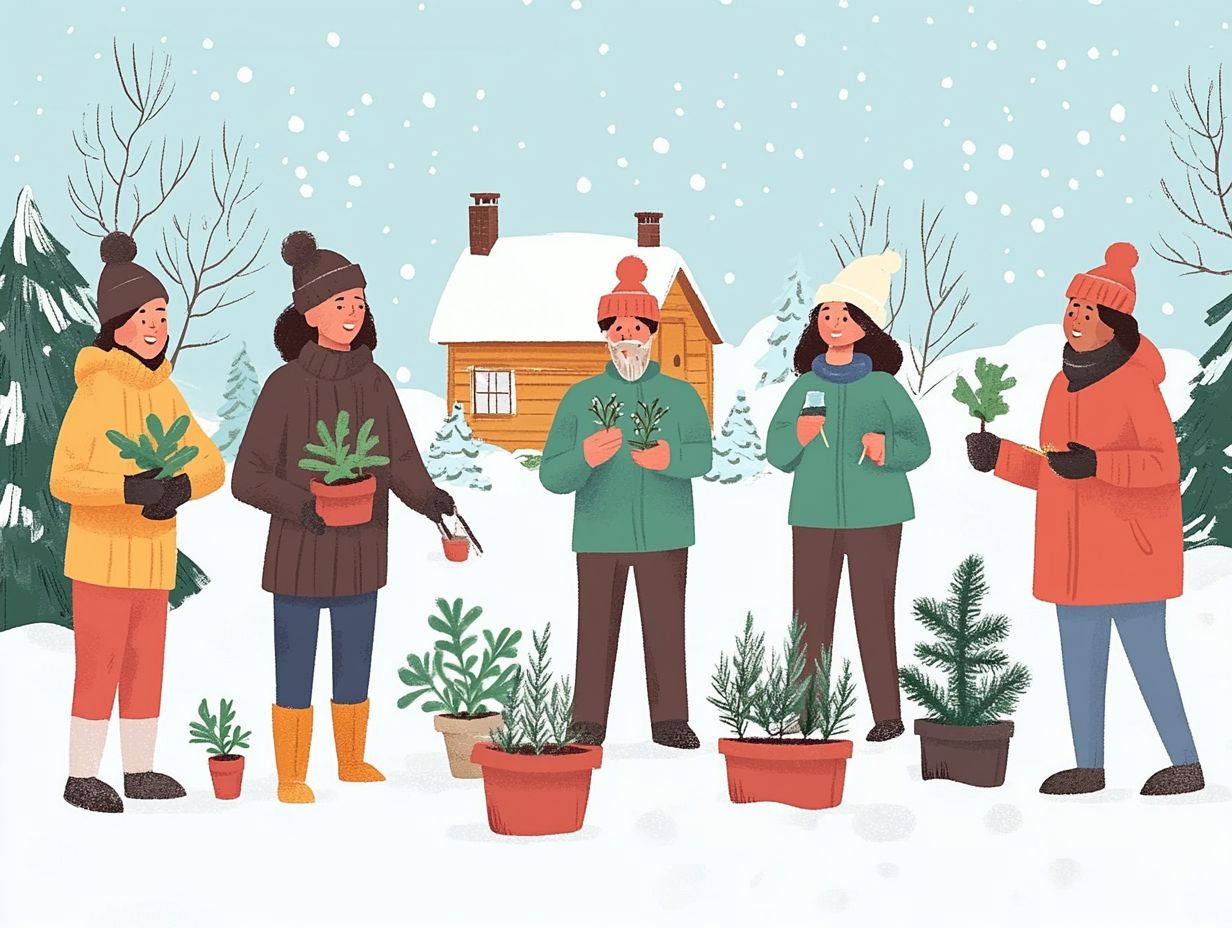
What is a cold-climate gardening club?
A cold-climate gardening club is a group of individuals who share a passion for gardening in colder climates, where the growing season is shorter and the conditions are more challenging. Members often learn how to identify cold-climate gardening challenges together.
Why should I join a cold-climate gardening club?
Joining a cold-climate gardening club allows you to connect with others who have similar interests and learn from their experiences. You can also gain valuable insights into what cold-climate gardening entails, along with access to resources and tips specific to gardening in colder climates.
Whether you’re seeking knowledge or companionship in your gardening journey, joining a cold-climate gardening club can be a rewarding experience. Understanding why to choose cold-climate gardening can enhance your experience even further. Get involved today!
How do I start a cold-climate gardening club?
Gather a group of like-minded individuals. Choose a meeting place and set a schedule.
Use social media or community bulletin boards to spread the word. This helps attract new members.
What types of activities do cold-climate gardening clubs do?
Clubs often organize garden tours and workshops. You can also participate in seed or plant exchanges.
They may invite guest speakers or engage in projects where everyone gardens together.
What are the benefits of joining a cold-climate gardening club?
Joining a club creates a sense of community. You ll share tips and have access to helpful gardening resources.
It s also a fun way to socialize with fellow gardening enthusiasts!
Do I need to be an experienced gardener to join a cold-climate gardening club?
No, everyone is welcome, from beginners to seasoned gardeners. You can learn from others and share your unique insights.

